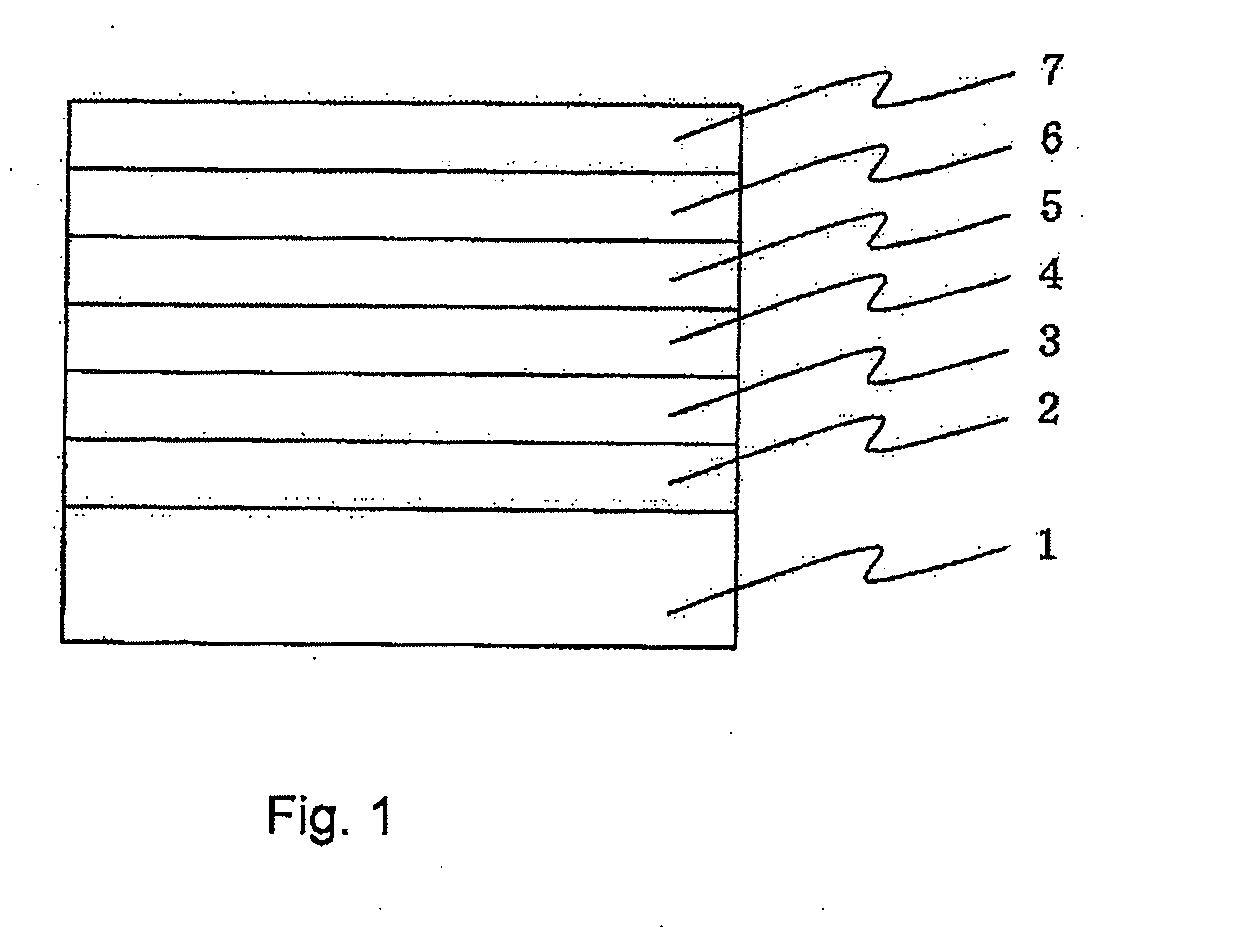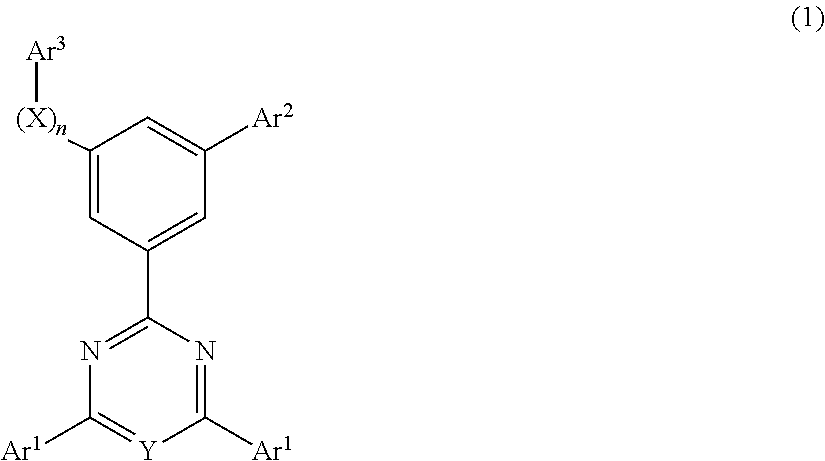Cyclic azine compound having nitrogen-containing fused aromatic group, method for producing same, and organic electroluminescent element comprising same as constituent component
- Summary
- Abstract
- Description
- Claims
- Application Information
AI Technical Summary
Benefits of technology
Problems solved by technology
Method used
Image
Examples
reference example 1
[0222]
[0223]5.97 g of 3,5-dibromobenzoic acid chloride and 4.12 g of benzonitrile were dissolved in 50 mL of chloroform. The obtained solution was cooled to 0° C., and then 5.98 g of antimony pentachloride was dropwise added therein. The mixture was stirred at room temperature for 10 minutes, and then heated under reflux for 22 hours. The reaction mixture was cooled to room temperature, and then distilled under a reduced pressure thereby removing chloroform to give a yellow solid.
[0224]The yellow solid was incorporated in 300 mL of aqueous 28% ammonia, previously cooled to 0° C., to give a white solid. The white solid-containing dispersion was stirred at room temperature for one hour, and then filtered to collect the white solid. The white solid was washed with water and then with methanol. The thus-obtained white solid was purified by silica gel column chromatography to give 6.32 g of 2-(3,5-dibromophenyl)-4,6-diphenyl-1,3,5-triazine as a white solid (yield, 68%).
[0225]1H-NMR (CDCl...
reference example 2
[0227]
[0228]In a stream of argon, a 500 mL three-necked flask equipped with a reflux tube and a mechanical stirrer was charged with 29.8 g of 3,5-dibromobenzoic acid chloride and 23.4 g of p-tolylnitrile. 200 mL of chlorobenzene was added to the content. The thus-obtained solution was cooled to 0° C., and 29.9 g of antimony pentachloride was dropwise added therein. The mixture was stirred at room temperature for one hour, and then heated at 100° C. under reflux for 2 hours. The thus-obtained dark red suspension was cooled to −20° C., and 135 mL of aqueous 28% ammonia was added thereto. The thus-obtained white milky suspension was stirred at room temperature for 30 minutes, and then, gradually heated on an oil bath to 140° C. A solvent was removed by distillation. 100 mL of chlorobenzene was added, and the obtained suspension of the reaction mixture was heated to 130° C. and filtered to remove insoluble materials. The filtrate was left to be thereby cooled, and 100 mL of methanol was...
reference example 3
[0232]
[0233]2.98 g of 3,5-dibromobenzoic acid chloride and 3.18 g of 4-tert-butylbenzonitrile were dissolved in 30 mL of chloroform. The obtained solution was cooled to 0° C., and then 2.99 g of antimony pentachloride was dropwise added therein. The mixture was stirred at room temperature for 10 minutes, and then heated under reflux for 17 hours. The reaction mixture was cooled to room temperature, and then distilled under a reduced pressure to remove chloroform.
[0234]The thus-obtained solid was incorporated in 200 mL of aqueous 28% ammonia at 0° C. to give a white solid. The white solid-containing dispersion was stirred at room temperature for one hour, and then filtered to collect the white solid. The white solid was washed with water and then with methanol. The thus-obtained white solid was purified by silica gel column chromatography to give 4.46 g of 2,4-bis(4-tert-butylphenyl)-6-(3,5-dibromophenyl)-1,3,5-triazine as a white solid (yield, 77%).
[0235]1H-NMR (CDCl3):δ1.41 (s, 18H...
PUM
 Login to View More
Login to View More Abstract
Description
Claims
Application Information
 Login to View More
Login to View More - R&D
- Intellectual Property
- Life Sciences
- Materials
- Tech Scout
- Unparalleled Data Quality
- Higher Quality Content
- 60% Fewer Hallucinations
Browse by: Latest US Patents, China's latest patents, Technical Efficacy Thesaurus, Application Domain, Technology Topic, Popular Technical Reports.
© 2025 PatSnap. All rights reserved.Legal|Privacy policy|Modern Slavery Act Transparency Statement|Sitemap|About US| Contact US: help@patsnap.com



